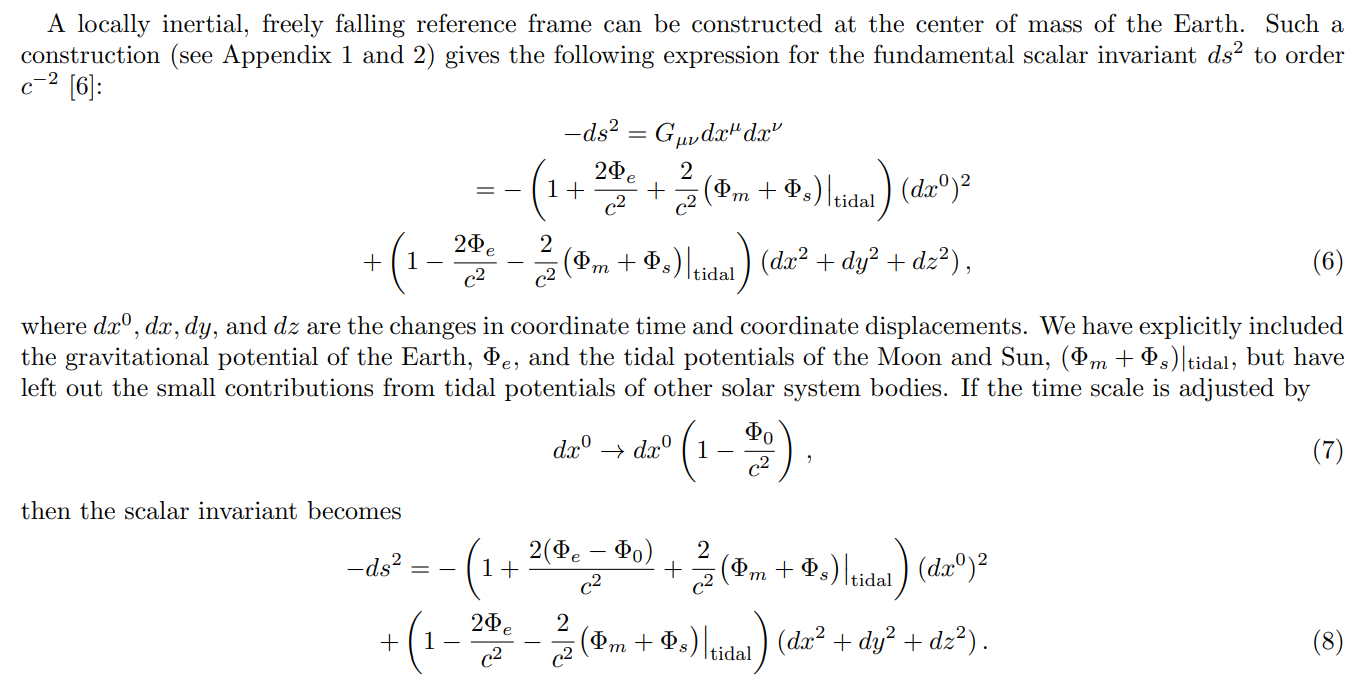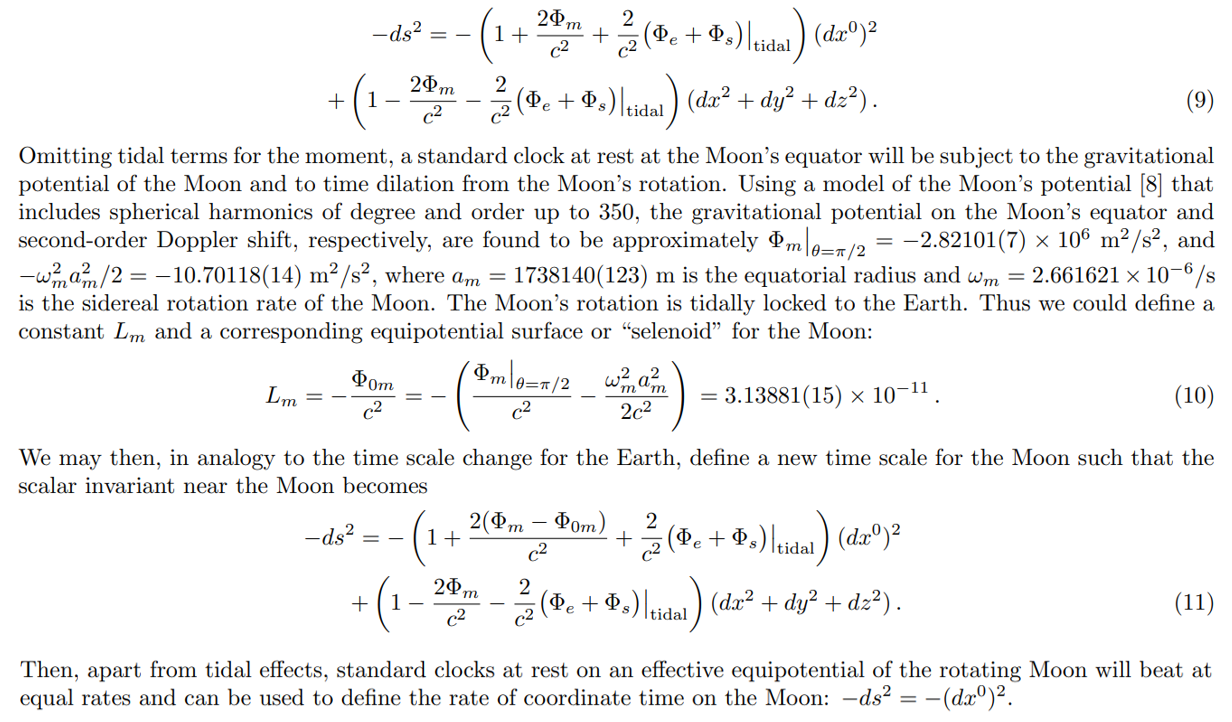and the distribution of digital products.
DM Television
Why Lunar Clocks Tick Faster Than Earth Clocks
Clocks at Earth-Moon Lagrance Points
4.1 Clock at Lagrange point L1
\ Appendix 1: Fermi Coordinates with Origin at the Center of the Moon
Appendix 2: Construction of Freely Falling Center of Mass Frame
Appendix 3: Equations of Motion of Earth and Moon
Appendix 4: Comparing Results in Rotating and Non-Rotating Coordinate Systems
Acknowledgments and References
\
2.1 Coordinate TimeIn establishing a coordinate time on and near the Earth, two relativistic effects are compensated by adjusting the rates of standard clocks. These are (a) the gravitational potential at the geoid and (b) the second-order Doppler shift due to the Earth’s rotation. The gravitational potential at the equator can be estimated from existing models of Earth’s gravitational potential. Viewed from an Earth-centered inertial frame, the second-order Doppler shift is
\
\

\ where ωe is Earth’s angular rotation rate and ae is the equatorial radius. Because the Earth’s geoid is nearly a surface of effective hydrostatic equilibrium, all atomic clocks on the geoid beat at equal rates, and this rate can be calculated on the Earth’s geoid at the equator. The effective potential Φ0 in Eq. (2) represents the fractional rate difference between an atomic clock at rest at infinity if the Earth were the only celestial body and an atomic clock fixed on the geoid of the rotating Earth.
\

\ With this adjustment in scale, apart from tidal effects which average to near zero, clocks at rest on the geoid beat at the rate of International Atomic Time (TAI), defined by atomic clocks at rest on the geoid. Coordinate time suitable for use in navigation and timekeeping near the Earth’s surface is then obtained by synchronizing clocks in the local inertial frame [7]. The proper time on a clock at rest on the geoid then, apart from tidal contributions, beats at the rate of coordinate time because the term Φ0 cancels the potential and second-order Doppler shifts on the geoid.
\
2.2 Local Frame for the MoonWhile the Moon appears fairly rigid, it is nearly spherical due to hydrostatic equilibrium. One can imagine a locally inertial, freely falling reference frame with its origin at the Moon’s center of mass, see Appendix 1. Near the Moon, the scalar invariant will be
\
\

\ \
:::info Authors:
(1) Neil Ashby, National Institute of Standards and Technology, Boulder, CO 80305 ([email protected]);
(2) Bijunath R. Patla, National Institute of Standards and Technology, Boulder, CO 80305 ([email protected]).
:::
:::info This paper is available on arxiv under CC0 1.0 license.
:::
\
- Home
- About Us
- Write For Us / Submit Content
- Advertising And Affiliates
- Feeds And Syndication
- Contact Us
- Login
- Privacy
All Rights Reserved. Copyright , Central Coast Communications, Inc.